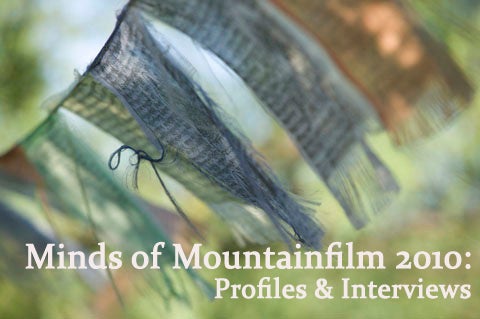
One of the world’s most accomplished mountaineers and explorers, an author, filmmaker and photographer, is known for being on the first team of Americans to summit K2 and thefirst from any country to do it without supplemental oxygen. He was onthe second American team to climb Everest. But in recent years, he hastaken on his most daunting challenge — saving our Earth’s wildness.
A conservationist to the core, Ridgeway has become an indispensableally of Earth’s most iconic endangered species and wild places. He hastrekked from the summit of Mount Kilimanjaro to the Indian Oceanamongst lions and elephants to raise awareness about the ways humans havetransformed our wild world, and he has hauled a 300-pound rickshaw across the16,000-foot rugged Tibetan wilderness to protect the chiru, a Tibetanantelope being killed off by poachers.
In the last several years, Ridgeway has brought this battle home toAmerica’s last remaining wild places and the iconic animals in dangerof disappearing. Part of the Patagonia family since the beginning,Ridgeway partnered with the clothing company to launch the Freedom toRoam campaign, an initiative based on the idea that wild animals needhundreds of miles of interconnected, undisturbed wild habitat tosurvive. In the United States, where sprawl and concrete has gobbledwilderness at a terrifying pace, this attempt to protect migratorycorridors for North America’s grizzlies, caribou and wild salmon is anawesome feat.
The epic journeys of these incredible animals are reminiscent ofRidgeway’s own adventures. And in the face of a challenge this huge, ittakes a bold, passionate and determined leader to succeed — a leaderexactly like Rick Ridgeway.
What factors first fueled your thirst for adventure?
I grew up in the orange groves Southern California in the 50’s and60’s, and when I saw the place paved over with housing developments, Ifled to the mountains above the LA basin. I used to ditch school and goup there on my Honda 50 motor scooter and hike around: it was where Ifound solace. Then I started going up there in the winter, and prettysoon had to buy myself an ice ax and boots and crampons and a copy ofFreedom of the Hills, with its instruction section on how to use thetools. So I taught myself: I couldn’t find anyone else with my interestor passion for the mountains and mountaineering— that didn’t happenuntil I was out of high school.
���ϳԹ��� and environmentalism have steadily converged over thepast few decades and you have been at the vanguard of that movement.What factors drove you to go beyond mountaineering and exploration totake on a leading role in sustainability initiatives?
Seeing the places I loved change before my eyes. My favorite routeof all my climbs used to be the Ice Window and Diamond on Mt. Kenya.Then it fell off. Global Warming. The first time I hiked into Fitrzroyin Patagonia what is now the city of Chalten was a sheep pasture. Butit had survey stakes laid out in large grid of streets and development.
How do you think this year's Mountainfilm theme of “extinctioncrisis” plays into a larger discussion about contemporary society andour future?
The extinction crisis is the biggest crisis on the horizon. Whatmost people don’t know is how it started 50,000 years ago, first whenwe humans moved into Australia, followed the Americas, the PacificIslands: in the wake of our expansion biodiversity has inverselycollapsed. People need to know what the Western US was like before wegot here 13,000 years ago. That’s the real baseline to measure from.
What does the loss of biodiversity mean for the world's human population?
I don’t think we’ll go extinct. We’re too wily. We’re just likecockroaches and starlings and coyotes. But who wants to live on aplanet with just the weed species for companions?
What, if anything, can the average citizen do to either curb thecurrent pace of species extinction or help mitigate the effects of it?
Support habitat protection, and support the creation of wildlifecorridors so in the face of the dual threat from habitat fragmentationfrom human development, now compounded by the threat of habitat shiftfrom global warming, critters can move with their habitats literallyshifting from under their feet.
With a lot of talk going on currently about the many dangersfacing the world, or parts of it, what are the conversations most worthsustaining?
Habitat, habitat, habitat, and landscape connectivity to go with it.
With the knowledge that you have of the perils facing us, and our world, how do you stay motivated and optimistic?
I remember what George Schaller told me when I asked him the samequestion. “The secret is not to get up in the morning and stretch yourarms and say ‘Today I’m going to save the world’. The secret is to getup and stretch and say ‘Today I’m going to save some small, discretepart of it’.”
Given the scope of your achievements in mountaineering and thelong list of your accomplishments in diverse fields, taking risks wouldnot seem to be among your fears. What fears do you have?
Living on what David Quamman calls a Planet of Weeds.
How, if at all, do you see showcase events such as the Mountainfilm festival playing a role in effecting positive change?
Awareness of everything I’ve mentioned above.